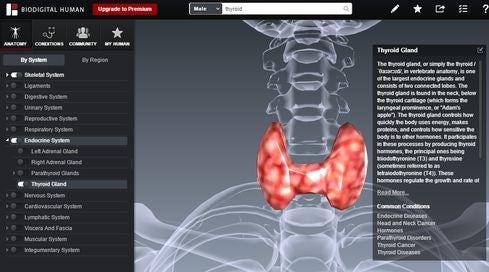The nonprofit counts EHR developers, health networks, and care providers among its growing roster of members.


9 Healthcare Innovations Driven By Open Data
9 Healthcare Innovations Driven By Open Data (Click image for larger view and slideshow.)
The nonprofit industry alliance DirectTrust hopes its voluntary accreditation and audit program, digital certificates, and relationship with the federal government will encourage more health information service providers (HISPs) to join its expanding program.
As part of healthcare's move to interoperability, starting Jan. 1, 2015, clinicians must use Direct electronic messaging, a process designed to replace faxes, for at least 10% of their referrals. Key to this messaging: directories that list how clinicians, health systems, pharmacies, and others in the healthcare ecosystem contact one another.
"Without the phone number, you can't send" referrals, said Dr. Charles Sawyer, chief health information officer for Geisinger Health System, an integrated health services organization that serves more than 2.6 million residents in 44 counties in central and northeastern Pennsylvania.
[What's the quickest path to interoperability? Read Healthcare Interoperability: Who's The Tortoise?]
But since the federal government did not mandate that HISPs interoperate, some are non-collaborative -- and that's where DirectTrust and its members come in.
Participants include Cerner, Athenahealth, Surescripts, San Diego Health Connect, Optum, Truven Health Analytics, and Siemens Medical Solutions. To date, DirectTrust serves more than 28,000 healthcare organizations and 450,000 individual users.
Surescripts, well known for its e-prescription and clinical messaging services, leveraged its provider knowledge to become a HISP, and it joined DirectTrust to promote adoption of standards and openness, Jeff Miller, general manager and executive vice president of clinical network services, explained in an interview. Surescripts saw an opportunity to broaden its clinical messaging product beyond medications. The company's clinical messaging service now provides hospitals and health systems with Direct authenticated, encrypted messaging, connectivity to the Surescripts network, and HISP capabilities.
Today more than 2,000 provider organizations and 23 health information exchanges (HIEs) and HISPs use Surescripts' service.
"Twenty percent of the US hospitals are connected to our network," said Miller, and the service reaches more than 300,000 clinicians. "Those other networks could be DirectTrust accredited networks or one of the 23 networks we maintain a network to network relationship with. A lot has been done, and a lot has to be done."
Valley Medical Center of Renton, Wash., joined Surescripts' HISP this year. "The ability to communicate easily and efficiently with our care partners ensures that all of our physicians and health care providers will be armed with the right information at the right time to make informed and collaborative care decisions," Robert Molina, MD, chief medical informatics officer, said in a press release.
Clients drive connections, he said, and Surescripts will connect with any HISP without charge, though the company hopes all HISPs eventually will become DirectTrust-accredited.
Dr. Seth Flam, CEO of HealthFusion, told InformationWeek that working with standards-focused associations will advance interoperability. "Surescripts is very committed to interoperability around this direct method of point-to-point email replacement, fax replacement. They have a really open-door, aggressive-in-a-good-way team trying to make all the connections they can."
Dr. David McCallie, senior vice president of medical informatics at Cerner, said Direct was a response to a need for secure email. Standards and interoperability should be the response to putting patients at the center of healthcare. "It really ought to be the patient that's at the center of the data flow. That ought to be sufficient for all the other systems and all the other providers to make it available. Sometimes providers are guilty of hiding behind HIPAA."
The owners of electronic health records aren't necessarily the patients. How much control should they have? Get the new Who Owns Patient Data? issue of InformationWeek Healthcare today.
About the Author(s)
You May Also Like







